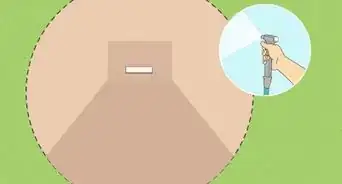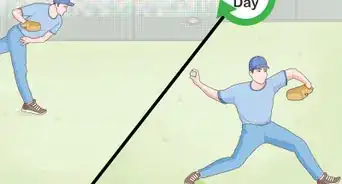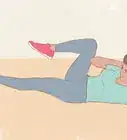This article was co-authored by Isaac Hess. Isaac Hess is a Baseball Coach, Instructor, and the Founder of MADE Baseball Development and Champion Mindset Training Program, a baseball training program based in Los Angeles, California. Isaac has over 14 years of experience coaching baseball and specializes in private lessons and tournaments. He has played baseball for both professional and collegiate leagues including Washington State University and the University of Arizona. Isaac was ranked as one of Baseball America's top 10 prospects for 2007 and 2008. He earned a BS in Regional Development from the University of Arizona in 2007.
There are 9 references cited in this article, which can be found at the bottom of the page.
This article has been viewed 112,857 times.
Pitching a baseball might seem simple at first. However, without learning the proper techniques involved your pitching skills will be slow to develop. Whether you play baseball for fun or professionally, properly training and increasing your pitch velocity can improve your performance. Building strength and mastering technique will both allow you to start adding both power and velocity to your pitches.
Steps
Improving Your Technique
-
1Use proper finger positioning. During a pitch you will need to fully utilize your motion to produce as much power behind the ball as possible. Part of keeping the full force behind the ball involves properly positioning your fingers during the pitch. Keep some of these tips in mind when pitching:[1] [2]
- Keep fingers behind the ball at all times. Avoid curling your hand or fingers in front of or to the side of the ball as you throw it.
- Hold the ball using your thumb, pointer, and index fingers.
- Your fingers should be placed across the horseshoe stitching, running parallel with it.
- This grip can also help with accuracy and consistency when throwing pitches.
-
2Build consistency. Even though you may train often enough and have adequate strength, pitching the ball without any consistency will prevent you from developing more pitching velocity. Consistent training is a key element of your practice that will help you develop faster pitching velocity.[3]
- Try recording your practice sessions and analyzing your technique.
- Coaches will often be able to help you analyze and improve your consistency.
Advertisement -
3Practice with long toss. Long toss will train your pitching skills by gradually increasing the amount of distance you are throwing the ball. It's a good technique to drill your throwing mechanics at different levels of intensity, improve power and velocity, and grant you familiarity with the motion of pitching in many circumstances. Follow this basic long toss training routine to start improving the power and technique of your pitches:[4]
- Warm up by simply playing catch or other light activity.
- Throw the ball around 60' feet for about four minutes.
- Move up to throwing the ball at 90' feet for three minutes.
- For two minutes, throw the ball at 130'.
- Maximize the distance by throwing the ball between 160-180' for two minutes.
- Bring it back down to throwing at 45' for one minute as a cool down.
-
4Use your entire body. It may be tempting to think of pitching as solely and upper body motion or technique. However, proper pitching that yields high velocity throws will require your entire body to work together in one fluid motion. This concept is know as the kinetic chain and it's something you should keep in mind when practicing technique.[5]
- Inefficiency or weakness in one motion or body part can weaken the entire pitch.
- The entire body must work together in order to generate more effective and powerful pitches.
EXPERT TIPIsaac Hess is a Baseball Coach, Instructor, and the Founder of MADE Baseball Development and Champion Mindset Training Program, a baseball training program based in Los Angeles, California. Isaac has over 14 years of experience coaching baseball and specializes in private lessons and tournaments. He has played baseball for both professional and collegiate leagues including Washington State University and the University of Arizona. Isaac was ranked as one of Baseball America's top 10 prospects for 2007 and 2008. He earned a BS in Regional Development from the University of Arizona in 2007.Baseball Coach & Instructor
 Isaac Hess
Isaac Hess
Baseball Coach & InstructorOur Expert Agrees: To improve your pitching mechanics, pick your knees up, keep your elbows up, and finish with a strong follow through. Doing that will improve your accuracy, and from there you can improve the speed and power of your pitches.
-
5Rotate your torso and hips when throwing. When you are pitching you will be using your entire body. This movement will require you to fully commit to the motion and use your maximum effort to throw the ball as fast as you can. Make sure you are using the full motion and torso rotation to maximize the velocity of your pitches.[6]
- Higher speeds of torso, hip and shoulder rotation will increase pitching velocity.
- Commit to improving and training your technique and mechanics.
-
6Keep the force behind the ball. The main source of velocity in a pitch will come from keeping your arm and hand directly behind the ball. Only at the very end of the pitching motion should you use your wrist to snap the ball. Always remember to keep your arm and hand directly behind the ball to build more velocity behind your pitches.[7]
- Rotating your wrist too early will take away some of the force behind the ball.
- Keep your hand, wrist, and arm straight when pitching.
Training For Strength and Flexibility
-
1Improve your strength and flexibility. Beyond practicing your pitching technique you can also add certain exercises to your training plan, yielding even greater results. Building a stronger body and increasing the levels of flexibility will help improve your pitching velocity. Think about adding some of the following basic exercises to your workout routine:[8]
- Push-ups
- Pull ups
- Squats
- Lunges
- Hamstring curls
- Crunches
- Full body stretching routines
-
2Use lunges to build stronger legs. Although training your upper body and core is important, strengthening your legs is just as important when increasing your pitching velocity. By strength training your legs you can help build a solid pitching stance and generate more power behind your pitches. Try some of these motions to do a proper lunge and strengthen your legs:[9]
- Stand straight with your feet apart at shoulder width.
- Take a long step forward with one leg.
- Drop your rear leg to the ground, straightening it out.
- Bend your front leg at the knee. Never let your knee go in front of your toes to prevent injury.
- Stand up straight again and repeat the motion, leading with the other leg.
- You can hold dumbbells in your hands to increase the difficulty.
-
3Build upper body power with push-ups. Push-ups are a simple maneuver that uses your own body weight to strengthen muscles and build power. The push-up will mainly target your upper body but will also work your core and legs. Use the following push-up technique to stay safe and build pitching power:[10]
- Go into a plank position, resting on your hands and toes.
- Your hands should be even with and just a bit wider than your shoulders.
- Keep your body and torso straight.
- Lower your body down to the ground by bending at the elbows.
- Your entire upper body and arms should be supporting your weight as you lower yourself down.
- At the bottom of the motion push yourself back up to the starting position.
-
4Target your core with planks. Planks are a static exercise that will target and fully engage your core. The exercise itself is simple but will still require you to use proper form to stay safe and get the most from it. Keep the following tips in mind when you are building core strength with the plank exercise:[11]
- Get into a push-up position. For a plank however, you will be resting on your elbows instead of your hands.
- Keep your back as flat as you can.
- Engage your core muscles to keep your torso straight and your hips up.
- Hold the position until you are unable to continue doing so.
-
5Maintain flexibility. Strength training and consistent practice sessions can be beneficial. However, these training methods can also reduce flexibility. Reduced flexibility will result in lower pitching velocity. Always maintain range of motion and flexibility by regularly stretching your muscles before and after practices or training.[12]
- Maintaining flexibility can also prevent injury.
Expert Q&A
Did you know you can get expert answers for this article?
Unlock expert answers by supporting wikiHow
-
QuestionHow can I pitch faster?
 Isaac HessIsaac Hess is a Baseball Coach, Instructor, and the Founder of MADE Baseball Development and Champion Mindset Training Program, a baseball training program based in Los Angeles, California. Isaac has over 14 years of experience coaching baseball and specializes in private lessons and tournaments. He has played baseball for both professional and collegiate leagues including Washington State University and the University of Arizona. Isaac was ranked as one of Baseball America's top 10 prospects for 2007 and 2008. He earned a BS in Regional Development from the University of Arizona in 2007.
Isaac HessIsaac Hess is a Baseball Coach, Instructor, and the Founder of MADE Baseball Development and Champion Mindset Training Program, a baseball training program based in Los Angeles, California. Isaac has over 14 years of experience coaching baseball and specializes in private lessons and tournaments. He has played baseball for both professional and collegiate leagues including Washington State University and the University of Arizona. Isaac was ranked as one of Baseball America's top 10 prospects for 2007 and 2008. He earned a BS in Regional Development from the University of Arizona in 2007.
Baseball Coach & Instructor Before you focus your main priority on speed, focus on throwing strikes and having good location. You do that by having good pitching mechanics. So you want to work on your pitching mechanics first, and that will allow you to make your body efficient and get the most out of your body rather than just trying to throw it. Know how to set yourself up, where to stand on the mound, how to transfer your energy from the mound towards home plate. Pick your knee up, stride, keep your elbow up, follow through. Break it down to the nitty-gritty basics.
Before you focus your main priority on speed, focus on throwing strikes and having good location. You do that by having good pitching mechanics. So you want to work on your pitching mechanics first, and that will allow you to make your body efficient and get the most out of your body rather than just trying to throw it. Know how to set yourself up, where to stand on the mound, how to transfer your energy from the mound towards home plate. Pick your knee up, stride, keep your elbow up, follow through. Break it down to the nitty-gritty basics.
Warnings
- Training unsupervised or without proper instruction can result in injury.⧼thumbs_response⧽
References
- ↑ http://probaseballinsider.com/baseball-instruction/how-to-throw-a-baseball-part-1-the-4-seam-grip/
- ↑ http://www.youthpitching.com/velocity.html
- ↑ http://www.ncbi.nlm.nih.gov/pubmed/16131704
- ↑ http://www.thecompletepitcher.com/longtoss.htm
- ↑ http://www.ncbi.nlm.nih.gov/pmc/articles/PMC3445080/
- ↑ http://www.hardballtimes.com/fastball-mechanics-the-pitching-mechanics-of-the-hardest-and-softest-throwe/
- ↑ http://www.popularmechanics.com/adventure/sports/a3207/1283161/
- ↑ http://www.thecompletepitcher.com/pitching_velocity.htm#10
- ↑ http://www.youthpitching.com/exercises.html
About This Article
To increase pitching velocity, train frequently using techniques like the long toss to improve your consistency. Remember to hold the ball with your thumb, pointer, and index fingers and position your fingers across the horseshoe stitching. It's also important to use your entire body to generate power rather than just using your upper body. Be sure to rotate your torso and hips and always keep your arm and hand directly behind the ball to build more velocity! For tips on improving your flexibility, read on!
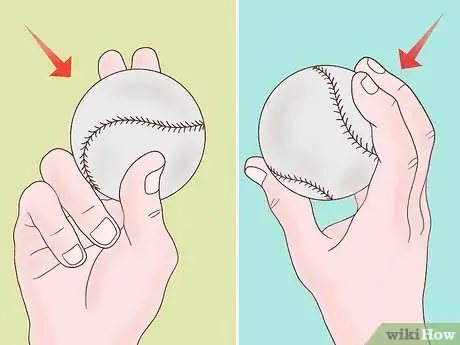

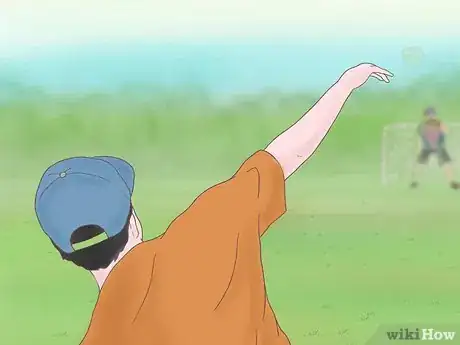
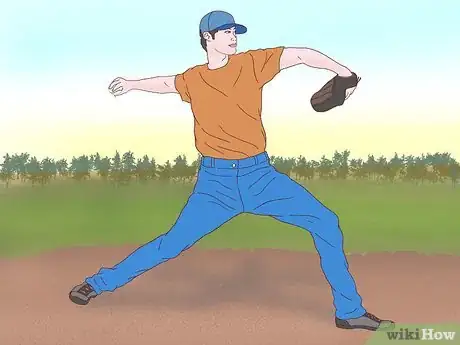
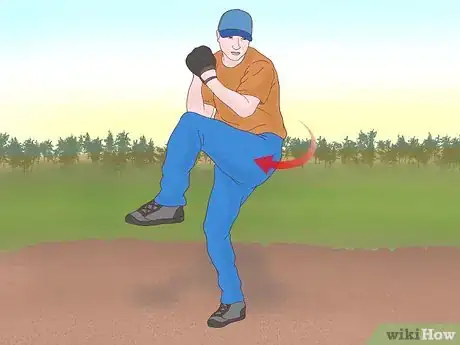

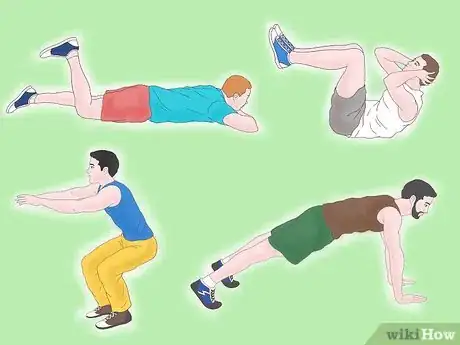


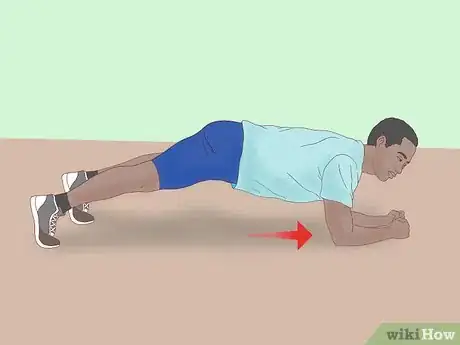
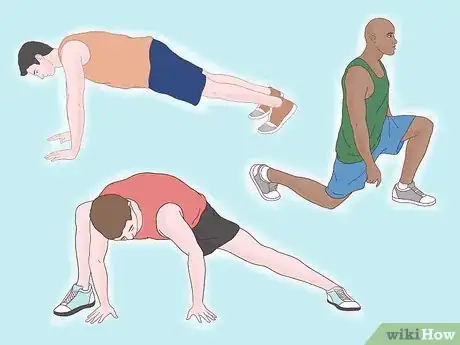


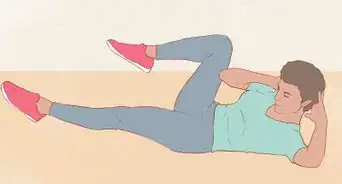
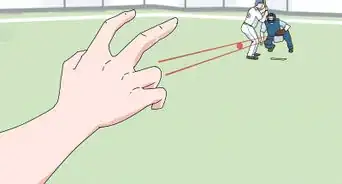
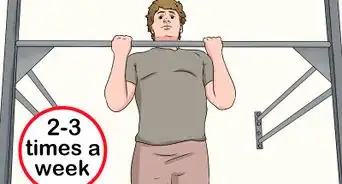
-Step-8.webp)


